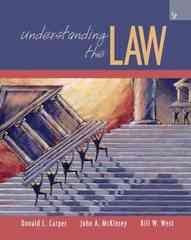Question
Consider the following two-stage entry-pricing game between an incumbent firm and a potential entrant: 2players:{incumbent,entrant} Two-stage game: Stage-1:Potential entrant makes its entry decision by choosing
Consider the following two-stage entry-pricing game between an incumbent firm and a potential entrant:
- 2players:{incumbent,entrant}
- Two-stage game:
- Stage-1:Potential entrant makes its entry decision by choosing from {Enter,Do not enter};
- Stage-2:The incumbent and the new entrant engage in simultaneous-move pricing game.
- If the potential entrant chooses to enter, she must incur a one-time fixed cost of entry,f,prior toengaging in price competition. This costincludes the advertising and marketing expenses which must be incurred prior to entry to guarantee a degree of customer loyalty that can match the incumbent's.
- The stage-2 price competition has the following structure:
- The market that opens for competition has three types of consumers:
- Type-1 consumers locked into the incumbent firm's product;
- Type-2 consumers locked into the new entrant's product;
- Type-3 consumers with no loyalty to either firm.
- Each firm can choose a price from {PH (high price), PL (low price)}.
- Profit margins per unit of output are:
- $10 if price = PH;
- $6 if price = PL.
- The demand has the following structure:
- If entry takes place, each firm has a loyal captive customer base demanding 2,000 units per year regardless of the price, and the floating demand for 6,000 units per year (price-conscious consumers buying from the lower-priced firm).
- If entry does not take place, the incumbent firm has the monopoly over the entire market demand for 10,000 units per year.
- Given that entry takes place, if both firms charge the same price, PH or PL, the floating demand will be divided equally between the two firms (hence, 3,000 units each). If the firms charge different prices, the firm charging the lower price will capture the entire floating demand of 6,000 units.
- Hence, ifentry occurs in the first stage, the payoff table for thesecond stage post-entry gamewould look as follows:
Entrant
PH
PL
Incumbent
PH
(xxx, xxx)
(xxx, xxx)
PL
(xxx, xxx)
(xxx, xxx)
Answer the following questions:
(a) What are the post-entry payoffs for the two firms if both firms charge high price, (PH, PH)? In other words, what are the payoff numbers in thousands of dollars going into the upper left cell in the above payoff table?
(b) What are the post-entry payoffs for the two firms if incumbent charges high price and entrant charges low price, (PH, PL)? In other words, what are the payoff numbers in thousands of dollars going into the upper right cell in the above payoff table?
(c) What are the post-entry payoffs for the two firms if incumbent charges low price and entrant charges high price, (PL, PH)? In other words, what are the payoff numbers in thousands of dollars going into the lower left cell in the above payoff table?
(d) What are the post-entry payoffs for the two firms if both firms charge low price, (PL, PL)? In other words, what are the payoff numbers in thousands of dollars going into the lower right cell in the above payoff table?
(e) If entry takes place, what are the Nash equilibrium prices in pure strategies for the two firms in stage 2? If more than one pure strategy equilibrium, you must identify all of them.
(f)Given the pure strategy Nash equilibrium identified in (e), what is the condition on the entry cost, f, that would support entry occurring as part of the rollback (subgameperfect) equilibrium? If there are multiple Nash equilibria, assume that the firms would select the one that satisfies the Pareto criterion (also focal point).
(g) Now suppose the firms play a "mixed strategy" game in stage-2 price competition. Again, derive the condition for the entry cost, f, that would support entry as part of the rollback equilibrium, given the mixed strategy equilibrium in stage 2.
Step by Step Solution
There are 3 Steps involved in it
Step: 1

Get Instant Access to Expert-Tailored Solutions
See step-by-step solutions with expert insights and AI powered tools for academic success
Step: 2

Step: 3

Ace Your Homework with AI
Get the answers you need in no time with our AI-driven, step-by-step assistance
Get Started


